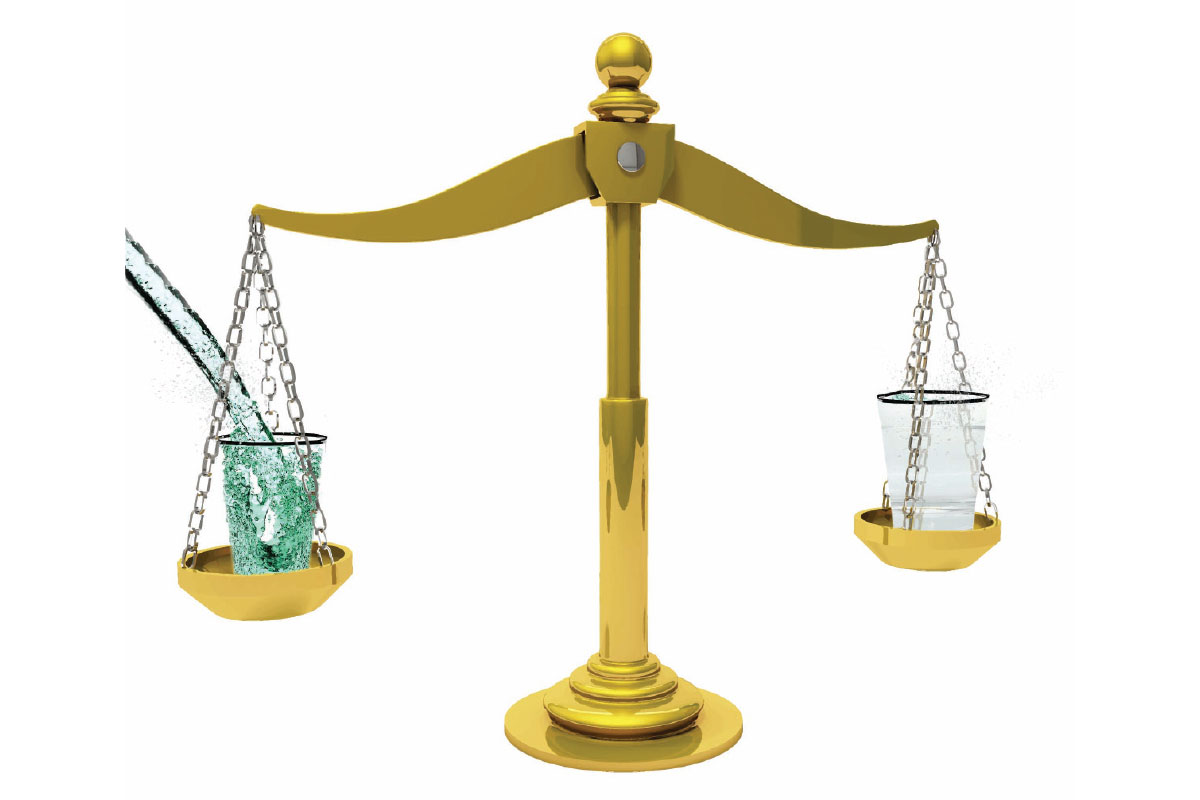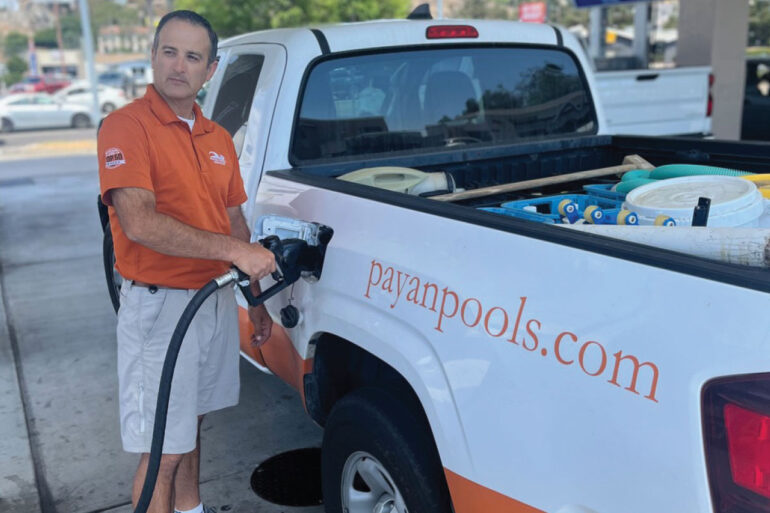In the balance

While Wilfred F. Langelier was a student at the University of Illinois, he was also an active member of four fraternities, as well as the head of the Mandolin Club, which would perform regular shindigs around campus. Yet somehow, between all that socializing and recreation, the budding chemist found time to change the way the world viewed his favorite chemical: H2O. One could say Langelier had found a good balance.
In 1936, the New Hampshire native published a paper called “The Analytical Control of Anti-Corrosive Water Treatment,” which became most famous for its introduction of the Langelier Saturation Index, or LSI, an indicator of the degree of saturation of calcium carbonate in water. By using this index, water surveyors, scientists, pool operators and more were able to determine just how well a water’s calcium carbonate balance was by measuring the water’s pH, alkalinity, calcium concentration, temperature and total dissolved solids. This of course begs the question: Why would anyone want to know the degree of saturation of calcium carbonate in water?
To answer this question, one would be wise to speak to an expert like Eric Knight, vice president of business development for Orenda Technologies. The Fairfield, Texas–based facilities services company specializes in manufacturing and selling pool chemicals, and has taken a special interest in educating customers as to the importance of LSI.
Imbalanced water becomes either corrosive when it is lacking calcium, or scale-forming when it has too much calcium.
Scale-forming describes the calcium carbonate buildup that solidifies on the surface walls of a swimming pool. It is typically white or tan and not particularly attractive. Water can only saturate so much calcium, so it leaves what it can’t absorb for the pool’s owner to clean up. Knight describes it as being akin to mixing sugar in a glass of water.
“You swirl it around and you stir it in, and it dissolves,” Knight explains. However, if one continues to add more sugar, eventually, the sugar will stop dissolving. “No matter how hard you stir it, there remains some sugar left at the bottom of the glass.”
Unlike with sugar, however, Knight says water craves calcium carbonate, and when it doesn’t have enough it can become corrosive — which, while not necessarily dangerous for swimmers, can cause permanent and expensive damage to the swimming pool, as well as pool equipment.
According to Lauren Broom, owner of Space Coast Pool School in Florida, the damage imbalanced water can do goes beyond surface level aesthetics.
“If you’ve got scaling water, it can scale up the blades in [the saltwater chlorine generator cell], and then it can’t make chlorine,” Broom says. “If you’ve got corrosive water, it can also damage the blades … It affects everything.”
Bloom, who teaches a certified pool operators’ class, says she tells her students that water balance is among the most important things they will need to learn.
“You can’t just test the water and look at one parameter,” Broom says. “They all affect each other.”
For that reason, both Broom and Knight agree: Water balance can’t be ignored.
Knight says some pool owners try to control their water by regularly mixing in different chemicals that address symptoms of the imbalance instead of the root of the problem — or worse, don’t try to address the problem at all.
“If you don’t [keep track], you’re going in blind,” Knight says. “If you are trying to impose your will upon water, then you’re basically ignoring physics. Physics always wins.”
Hubris, Broom agrees, can dissolve one’s finances even faster than imbalanced water can dissolve concrete.
“It increases the costs for the pool service company and the costs of chemicals used, because they have to treat the water for whatever issues,” Broom says. “It can even result in the pool having to get resurfaced.”
According to
Poolresearch.com, the estimated cost of resurfacing a pool in the U.S. can be $7 per square foot, which means a pool owner may end up paying anywhere between $1,500 and $100,000 to fix a problem that could have been prevented.
While both Broom and Knight agree that anyone who wishes to adjust a pool’s water balance should seek a certified pool operator, one doesn’t need a degree in chemistry, an expensive laboratory or even a certification to check how balanced a swimming pool is, so long as they know the pool’s pH level, temperature, calcium hardness ppm, cyanuric acid/stabilizer ppm, total dissolved solids ppm and they don’t mind spending their afternoon working out a complex mathematic formula.
Thankfully, for those who would rather spend more time running their pool business than trying to remember their 10th-grade chemistry class, Knight says there is an Orenda phone application to help calculate one’s LSI, available in the Apple App Store and on Google Play. Imagine, if Langelier had had access to such technology, how many more clubs and fraternities he would have had time to join.




